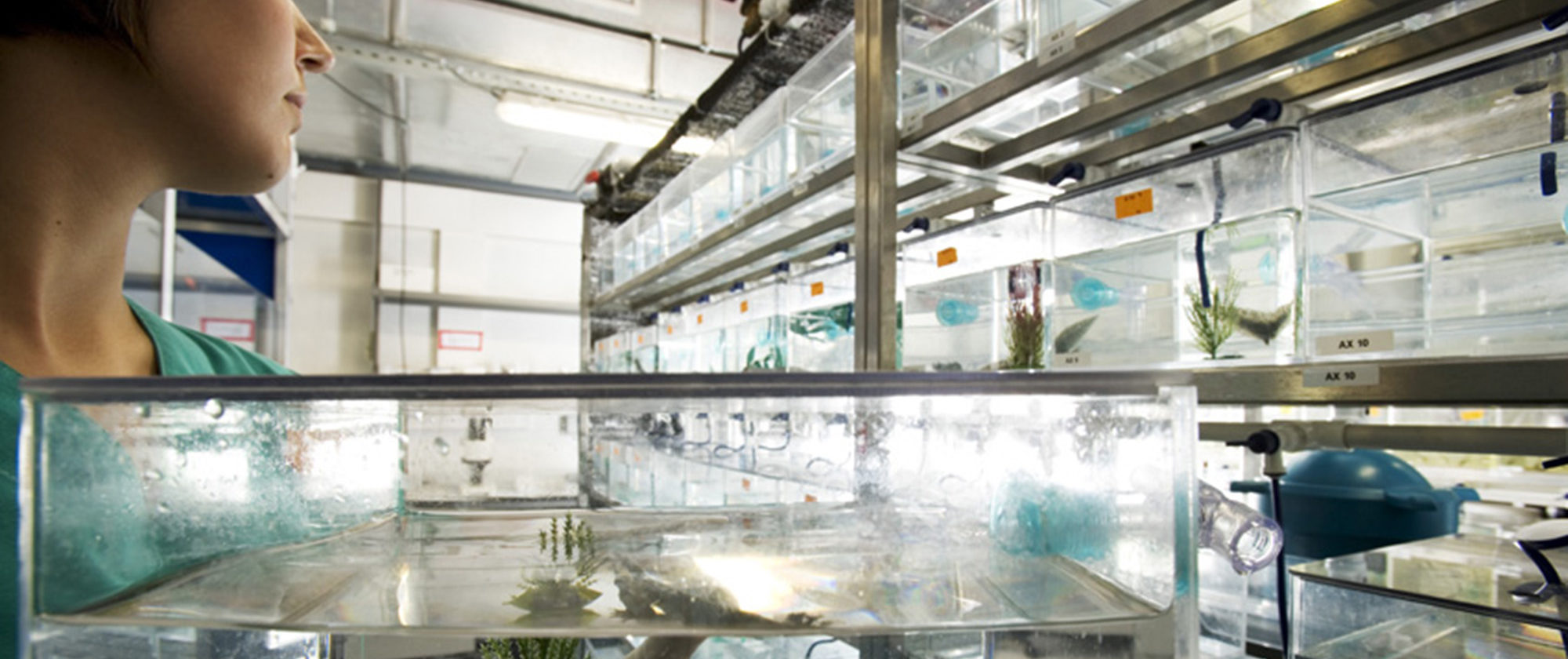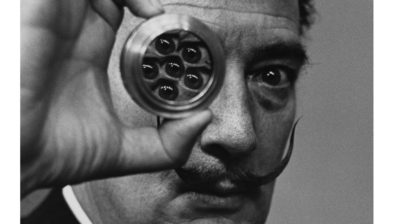The convenience of the use of animals in experimentation is a polarized debate, with opinions to suit all tastes, which has been active practically for the whole of human history. The Corpus hippocraticum (written in the 4th and 5th century BC by Hippocrates and his followers) already contains images of anatomic studies done with animals, showing that animals were already used at that time to progress in scientific knowledge. On the other hand, at about the same time Pythagoras proposed that animals and humans had the same kind of “soul”, thus making them worthy of respect and protection.
More than 2000 years later, and despite the fact that the way animals are used has changed a lot, the issue is still alive. This is why the goup ESLA (Students for the animal fight) from the Pompeu Fabra University (UPF) organized the “First animal week” from February 18 to 22, with a series of talks on animals and ethics, jurisdiction, communication and even feminism. On Thursday 22, a debate took place at the university, where four speakers presented some data and their different views regarding the use of animals in biomedical experimentation.
The speakers, two scientists and two philosophers, represented two opposed points of views. For some, using animals to improve biomedical research is justified because of the benefits that experimentation entails, and that we couldn’t obtain by any other means – always trying, of course, to use the minimum number of animals and ensuring maximum welfare. For the others, the question is not whether animals are useful or not to progress on a scientific level, but a more basic question; is it morally justified to use them for our benefit?
The four participants seemed to agree on a basic premise; animals are sentient beings, they suffer just like us. So, the ideal goal would be to reach a total replacement of the use of animals in research. However, they have different opinions on whether this objective is really achievable in the short or medium term.
Animals are sentient beings and they suffer like us; the ideal objective would be to totally replace their use in research. But, is this really achievable in the short or medium term?
Against
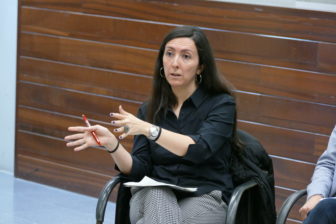
Fabiola Leyton, from the Observatory of Bioethics and Law at the UB, explained the need for strict regulation and control of the animal experimentation at the level of the entire planet. Thus, she said, in Europe there are good standards of animal welfare based on the actual scientific knowledge of animal suffering; but it is not like that in other countries. In addition, in order to reach ‘the ultimate goal’, she called for active support for the replacement, something that “the moral progress of society is asking for”.
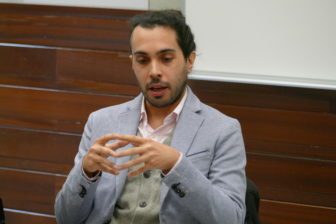
Eze Paez, from the Centre for Animal Ethics at UPF, presented his ethical arguments against any use of animals for our benefit, since this consists in speciesism – to consider other animals’ interests inferior to those of humans simply because they are from another species. Here you can read one article that summarizes the arguments of the philosopher (in Spanish).
Speciesism consists in considering other animals’ interests inferior to those of humans simply because they are from another species.
In favor
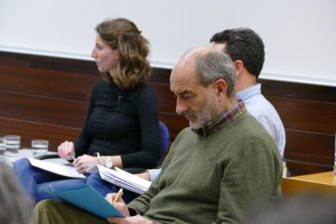
Juan Martín Caballero, director of the animal facility at the Biomedical Research Park of Barcelona (PRBB) and a veterinarian with 37 years of experience with animal experimentation, began saying that the veterinarians are, precisely, to give voice to the animals that can’t talk by themselves. “I am passionate about the animal world, starting with the little ant that I can inadvertently step on, to the dog that lives in a small apartment with owners who do not take him or her for a walk”, he said. However, Caballero does not imagine a future without animal experimentation for at least 50 years, despite the many scientific advances that are being made towards the replacement of animals for alternative techniques. Moreover, he added, biomedical and biotechnological research done with animal experimentation also benefits other animal species besides humans. Vaccines that nowadays we can use for our dogs and cats, or antibiotics, analgesics and anesthetics that benefit all animals are clear examples. The director of the animal facility at the PRBB regretted, however, the existent demagogy used in some cases; for example, the use of animals to test cosmetics was forbidden six years ago, and yet there are still pharmacies that use the “here we do not use them” strategy.
(You can listen to Juan Martin Caballero defense of the need of animal experimentation here in Spanish)
Caballero also took advantage of the opportunity to highlight the numerous requirements that are needed for any research study that uses animals – from the specific accreditation of the staff in contact with the animals, to various ethical committees that must approve the study, as well as the conditions of the facilities where the animals live. Finally, he emphasized the big progress regarding the transparency of communication on animal experimentation, and invited the attendees to visit the Spanish Ministry of Science website, where the number of animals and the reason why they are used is published annually.
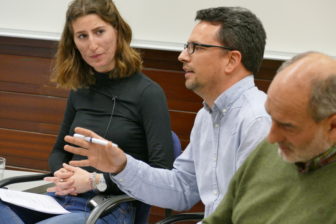
Sergi Vila, from the European Animal Research Association (EARA), closed the presentations of the speakers putting in context the use of animals for experimentation (800.000 per year in Spain), when he compared it with the number of animals slaughtered by the food industry (824 million animals in the same period and place). He also gave a specific example of how the use of “avatars” or “mirror” mice – to which a patient’s tumor is implanted to test different drugs and see which will be the most efficient – makes it possible to advance in personalized medicine, being very useful for people that don’t respond well to other treatments (he used as an example a girl with a poorly diagnosed type of cancer). Here you can read a document from EARA, the organization that Vila represented, with “Forty reasons to defend animal research”.
The number of animals used for experimentation in Spain is 800.000 per year, while the food industry slaughters 824 million animals.
Conclusion
Despite their opposing positions, something in which all the speakers totally agreed was the convenience of this type of debates and reflections. Thanks to the fact that we question our attitude towards animals and the pressure that this provokes on the society, the regulation of animal experimentation has improved a lot. On the other hand, it is important to use these debates to inform the society that the current use of animals in the laboratory is very restricted and controlled, and that scientists do no use them gratuitously, but only when there is no alternative. As always, transparency and honesty on both sides will be necessary to reach middle ground.
In any case, the debate is still alive.
In this video (in Spanish), you can see a summary of the event, with some of the interventions of two of the speakers.


